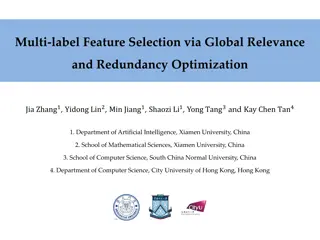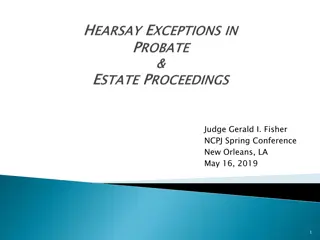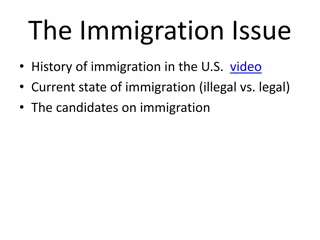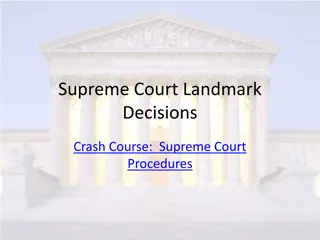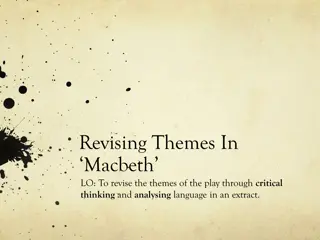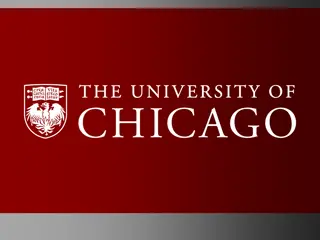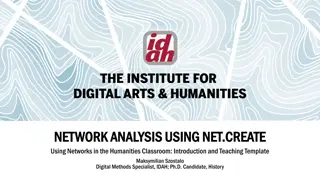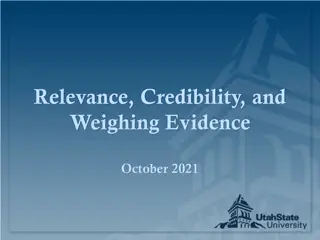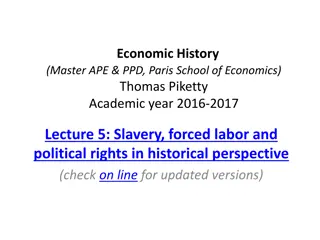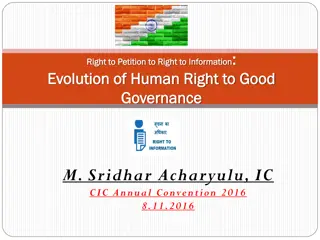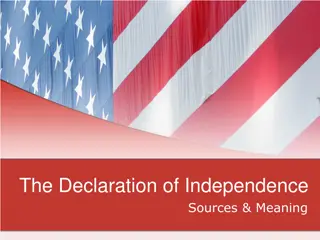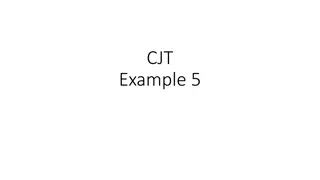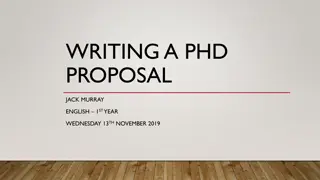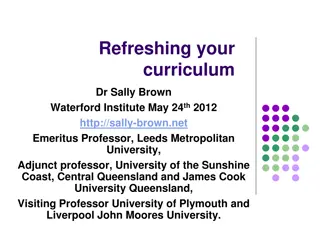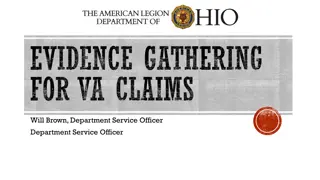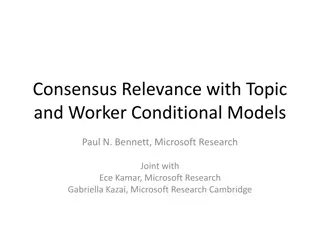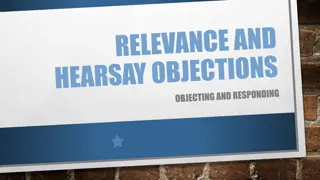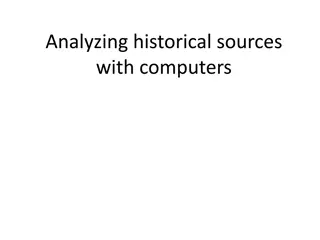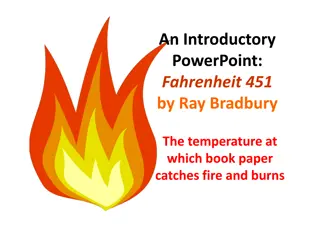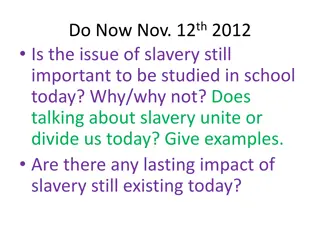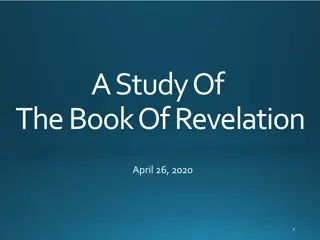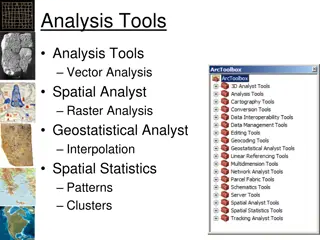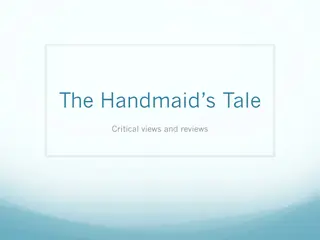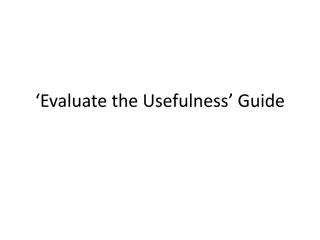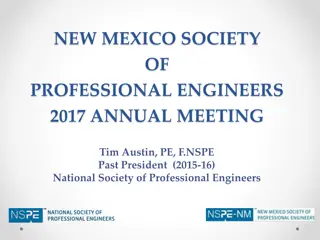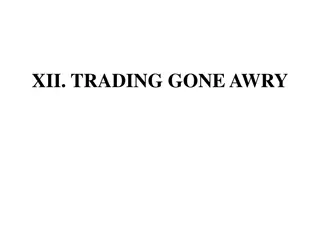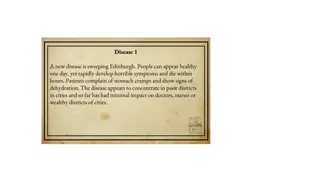The Panic of 1819 and its Relevance Today - A Historical Analysis
The presentation delves into the significant yet overlooked Panic of 1819, caused by the Second Bank of the United States' credit expansion and intense cronyism. It explores the impact on free market thinking, the revival of Antifederalism, and the formation of the Jacksonian coalition. Drawing parallels to current times, it emphasizes the importance of learning from historical events for future reform efforts.
Download Presentation

Please find below an Image/Link to download the presentation.
The content on the website is provided AS IS for your information and personal use only. It may not be sold, licensed, or shared on other websites without obtaining consent from the author. Download presentation by click this link. If you encounter any issues during the download, it is possible that the publisher has removed the file from their server.
E N D
Presentation Transcript
THE PANIC OF 1819 AND ITS RELEVANCE FOR TODAY Patrick Newman Mises University 2020
What is it with the year 20? 1720 South Sea Bubble 1820 Panic of 1819 1920 Depression of 1920 2020 The Coronacation
What is this presentation about, and why should I care? Taken from my forthcoming book on Liberty versus Power: A History of Cronyism in the United States, 1607-1849 (2021?) Special interest legislation Discusses the extremely important (but neglected) Panic of 1819 Caused by Second Bank of the United States credit expansion Intense cronyism surrounding everything about the Panic of 1819/SBUS Panic of 1819 led to growth in free market thought, revival in Antifederalism, and future Jacksonian coalition Hopefully our future reformers will learn from 1819 (and my presentation)
The War of 1812I remember it like it was 208 years ago First Bank of the United States (1791-1811) In early 1813, prominent Republican financiers, Stephen Girard and John Jacob Astor purchase $10 million of high risk government debt Girard and Astor want to reduce risk of purchase, in early 1814 they lobby Congress to charter another central bank They want investors to be able to purchase stock with government debt August 1814: state banks suspend specie payments October 1814: Girard and Astor lobby to make their Philadelphia lawyer Alexander J. Dallas new secretary of the treasury
After the war January 1816: Congressmen Henry Clay, John Calhoun, and SOT Dallas push for the chartering of a new central bank Corporate charter (i.e., a license) contained privileges very similar to what the FBUS possessed Twenty year monopoly over interstate banking (Philadelphia main office) $35 million market capitalization (20% million government owned $21 of $28 million of private ownership could be purchased with government debt Federal government keeps deposits at bank (massive subsidy)
After the war Congress passed in April 1816, Girard estimates profits will be immense. Girard becomes largest shareholder Girard and Astor two of five government appointed directors at main office Astor became President of New York branch
But unfortunately for Girard and Astor Other crony businessmen seize control of SBUS during election of the main office s president Bank charter one shareholder, no matter the size, can only exercise a maximum of 30 votes Baltimore: proxies! Lawyer George Williams: controlled 1,172 shares legally owned by his clients 15 men in Baltimore control 75% of shares legally held by 16,000 people Baltimore secures election of former Secretary of the Navy William Jones (a political stooge), Girard and Astor fuming
You can take that to the bank, the highly inflationary bank January 1817: SBUS opens for business, starts inflating Lends $6 million to New York City, Philadelphia, Baltimore, Richmond banks to resume specie payments (they don t) From 1817 to mid-1818, SBUS increases credit expansion by 57% From 1815 to 1817, money supply increases by 25% SBUS branches and state banks lend for building construction, long term agricultural improvements, slaves, turnpikes, shipbuilding, steamboats From 1816 to 1818 wholesale prices fell seventeen percent, but they rose in above sectors
Baltimore branch leads the pack James Buchanan Partner in Smith & Buchanan mercantile house (Congressman Samuel Smith) Government appointed director at main branch President of Baltimore branch Buchanan, James McCulloch (bank cashier), and George Williams (remember him?) loaned themselves $1 million, fraudulently claimed they secured loans with collateral They bribe SBUS President William Jones to look the other way
But the good times cant last forever During this time, Secretary of the Treasury William Crawford, quasi-Old Republican, pushes for specie redemption to return to gold standard Election of 1824 State banks refused to convert, but not the SBUS First half of 1818, specie reserves at SBUS start to decline Second half of 1818, SBUS engages in a massive credit contraction (41%) Fall 1818, Congress investigates bank, particularly Baltimore branch 1817 to 1818 money supply falls 10%
The Panic of 1819 Thomas Jefferson to John Adams: the paper bubble is then burst. From 1818 to 1820 wholesale prices fell 28% From 1818 to 1819 daily wages for agricultural workers and unskilled turnpike workers plummeted 60-80%
Was it so bad? Federal government practiced appropriate countercyclical policy Money supply remained flat from 1818 to early 1820s 1819 to 1821 federal government spending declined 26% But, no real effect on economic activity 1816 to 1818 real GDP per capita constant 1819 real GDP per capita fell 1.1% 1819 to 1824 real GDP per capita increased 1.5% per annum
Joseph Davis (2006) on the nominal illusion Joseph Davis, An Improved Annual Chronology of U.S. Business Cycles since the 1790s, Journal of Economic History (March 2006). One plausible explanation for the disparity [in nineteenth century depressions] may commercial crises with financial ones, because the latter were better characterized by falling commodity and security prices, rather than declines in real industrial activity. be that the media confused
The people are still upset. They start to attack the SBUS But the SBUS employs friends in high places Intellectual defense: establishment National Intelligencer receives loans from bank (also receives lucrative printing contracts from Congress) Political defense: Congressmen Henry Clay and Daniel Webster receive loans from the bank as well as a retainer for providing legal services Clay s annual retainer $6000 (more than the secretary of state!) Central banking defense: Nicholas Biddle government appointed director in January 1819, early 1823 bank s president
McCulloch v. Maryland Legal defense: Chief Justice John Marshall (stockholder in the bank) Can states tax the SBUS branches like they tax their own state banks? Important: Daniel Webster on bank s legal team, Marshall sold shares right before case Marshall ruling in March 1819: states cannot tax SBUS branches, and for that matter, the federal government can pretty much do whatever it wants Week after decision: investigations reveal bank cashier James McCulloch as a massive embezzler; McCulloch, Buchanan, and Williams soon get off scot free
What does all of this cronyism cause? Growth in free market economic thought After the War of 1812, and increasingly after the panic, hard money economic theories flourish David Ricardo Jean-Baptiste Say Destutt de Tracy Jefferson and others promote Destutt de Tracy and Say s work in colleges and public forums April 1821 Condy Raguet wrote to David Ricardo: the whole of our population are either stockholders of banks or in debt to them. It is not the interest of the first to press the banks and the rest are afraid.
What does all of this cronyism cause? Rebirth in Antifederalist thought McCulloch v. Maryland (1819) continued consolidating trend of Supreme Court (1816 Martin v. Hunter s Lessee) Old Republican John Randolph: decision wrong, wrong, all wrong Old Republican John Taylor, Construction Construed and Constitutions Vindicated (1820) and New Views of the Constitution (1823) Ohio dismissed McCulloch v. Maryland, state legislature went so far as to recognize and approve the Kentucky and Virginia Resolutions for showing states have an equal right to interpret the Constitution themselves. SBUS refused to pay Ohio s tax, Osborn v. Bank of United States (1824), Clay and Webster bank s legal counsel, Supreme Court protects SBUS
What does all of this cronyism cause? The Jacksonian coalition In 1820, Tennessee state legislature contemplates passing paper money government loan office General Andrew Jackson sends petition to legislature, citing judicious political economists who demonstrated that the large emissions of paper from the banks by which the country was inundated, have been the most prominent causes of those distresses of which we at present complain. Jackson later vetoed SBUS recharter in 1832
Conclusion The Panic of 1819 was a defining moment in American history Demonstrated the immense corruption after the War of 1812 Led to growth in free market thought and future reform efforts Please read my book when it comes out!




